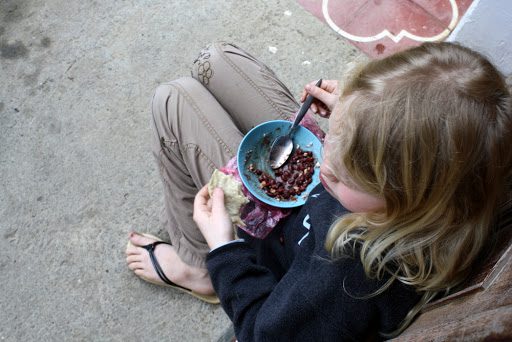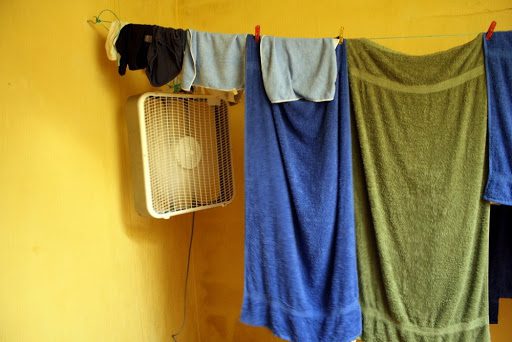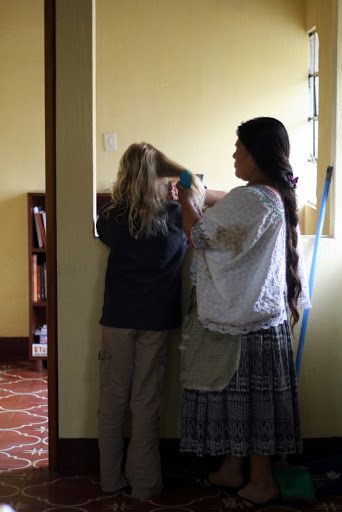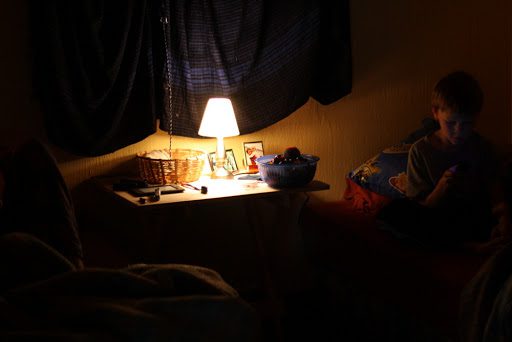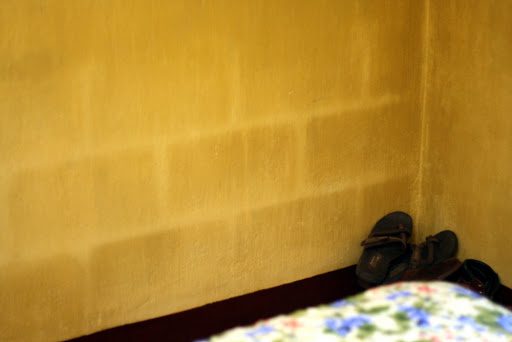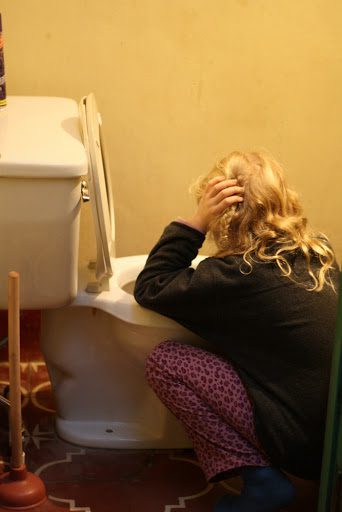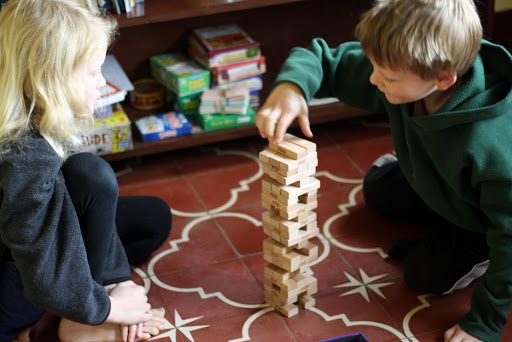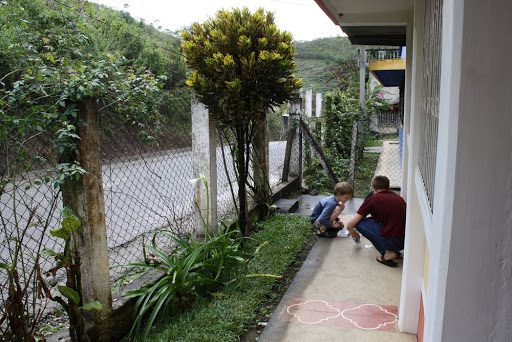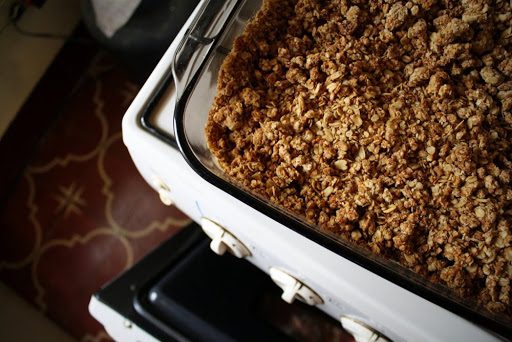Last Saturday we went out to Bezaleel for the first day of vocational arts classes. The Saturday program is the main reason we are here. We are supposed to be giving support to the instructors and helping out where needed. There is a lot of other work we can be (and will be, no doubt) doing, but for now, this is our focus.

When we arrived, a general assembly was in full swing. We walked in and took seats. Before long, we were called to the stage to introduce ourselves. I did most of the talking into the echo-y microphone. Afterwards, the students were excused to go to their classes.

I sat in on the cooking class. For the first hour, the teacher, Iris, dictated notes to the students. Someone loaned me a pen and paper and I took notes, too. The lesson was on good hygiene. After the break, the class headed up to the kitchen and set about making a “salad,”—a hot vegetable stir-fry that they topped with a squirt of mayonnaise and sold to the other students at lunch time.

Between the 16 students, there were three knives and three cutting boards. While they took turns painstakingly chopping the vegetables, I wandered around the campus observing the other classes, checking in on the kids (who were hanging out with Wilmer), and meeting people.

In one of the kitchens, a group of teenage girls were patting out the tortillas. I asked them to teach me, so they did. We stood there, patting tortillas (most of mine fell apart, but a few turned out okay!), and visiting.
The carpentry instructor didn’t show, so my husband ended up teaching his first class.

The shop is located on the downstairs porch across from the kitchens and consists of a couple of wooden work benches and several dull handsaws. When I stopped by, my husband had them cutting up wood to make a toolbox (for the tools they don’t have…yet). The boys seemed to be having a grand time.

At lunch time, the students appear in the serving room, a bowl and cup in their hand. Lunch that Saturday was a scoop of greens in broth (I didn’t get to try it), a stack of tortillas, and coffee. There’s always a bowl of saucy hot peppers sitting out for them to scoop onto their food. Lots of kids opted to pay the 35 cents to get a serving of the salad. (The cooking class students were instructed to hawk it and about died from embarrassment—the money they earn will go back towards buying more supplies for the class). Afterwards, the students wash their own bowls and take them back to their rooms where they store them with their personal possessions.

A couple days before when we first visited the school, lunch was rice, a piece of chicken, and tortillas (always tortillas). My younger son adored the rice. He kept begging for more. We told him that there was no more. I explained that if he eats more than his share than other children can’t eat. It’s a simple concept, yet a hard one to grasp. In the States, when I say there is no more food and we’re done eating now, there is always more food somewhere, in some form.

We stopped by the school yesterday to talk with Virginia, the program director, and Manuel, the accountant. We discussed tools for the classes and the schedule. We plan to arrive again tomorrow to, once again, observe and learn to know more. But, we explained, our focus right now is in setting up the house and learning out to go about the daily task of living. As soon as we’re settled, we’ll be much more available.



